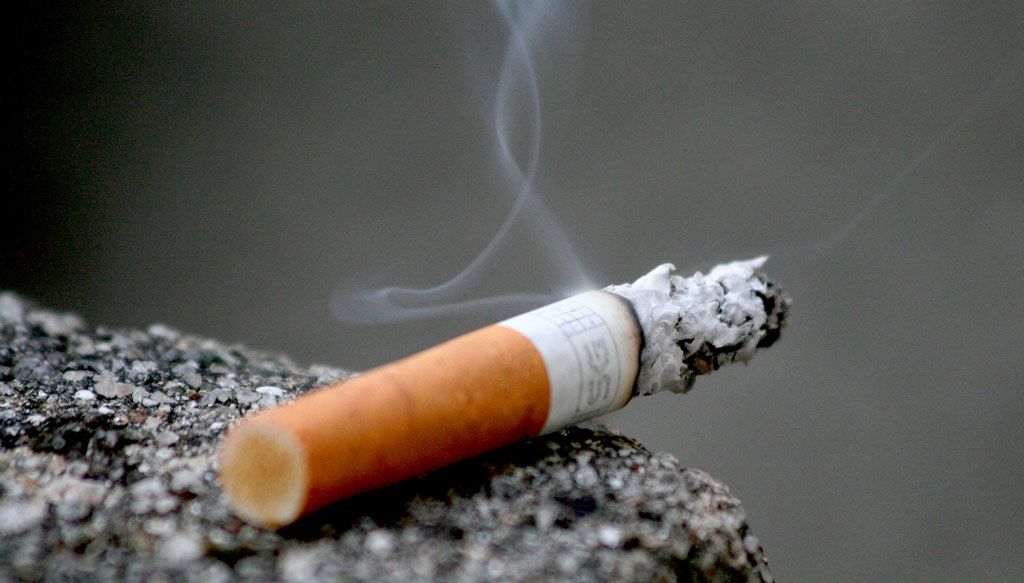Tobacco tax one of the most heated for November ballot
 SACRAMENTO – There’s broad agreement that the 17 initiatives on the statewide ballot on November 8 cover some of the most significant public-policy issues to come before voters in more than a decade. For instance, voters will have a chance to legalize marijuana, outlaw the death penalty, put an end to the state’s virtual ban on bilingual education, approve a broad gun-control package and reduce prison sentences for some non-violent felons.
SACRAMENTO – There’s broad agreement that the 17 initiatives on the statewide ballot on November 8 cover some of the most significant public-policy issues to come before voters in more than a decade. For instance, voters will have a chance to legalize marijuana, outlaw the death penalty, put an end to the state’s virtual ban on bilingual education, approve a broad gun-control package and reduce prison sentences for some non-violent felons.
But two months before the election, one of the highest-visibility measures also is fairly narrow in scope. Proposition 56 would raise California’s relatively low tobacco tax (relative to other states) by $2 a cigarette pack – and increase taxes by an equivalent amount on all other tobacco products (cigars, chewing tobacco, etc.). It also would significantly increase taxes on electronic cigarettes and vaping products. It has high visibility right now because of a series of advertisements opponents are running on radio stations across the state.
Supporters pitch the measure as a means primarily to boost public health. “An increase in the tobacco tax is an appropriate way to decrease tobacco use and mitigate the costs of health care treatment and improve existing programs providing for quality health care and access to health care services for families and children. It will save lives and save state and local government money in the future,” according to the initiative’s findings.
Gov. Jerry Brown recently signed into law a package of anti-tobacco bills that, among other things, raise the smoking age to 21. Studies of addiction show that teens who begin smoking are more likely to continue this dangerous habit throughout their lives. Backers of this initiative argue that raising the prices of cigarettes is another main way to dissuade people from smoking. And they point to the costs to the health system imposed by smokers.
But the measure’s opponents are focused increasingly on the spending aspects of the proposal. According to the official ballot argument against the measure, “Prop. 56 allocates just 13 percent of new tobacco tax money to treat smokers or stop kids from starting. If we are going to tax smokers another $1.4 billion per year, more should be dedicated to treating them and keeping kids from starting. Instead, most of the $1.4 billion in new taxes goes to health insurance companies and other wealthy special interests, instead of where it is needed.”
An analysis by the non-partisan Legislative Analyst’s Office confirms that only a small percentage of the estimated $1.4 billion in new revenues are earmarked to such programs. The main priority of the new funds, based on the LAO analysis, is to “replace revenues lost due to lower consumption resulting from the excise tax increase.” That reinforces the odd conundrum faced by California and other states. They use tax and regulatory policies to promote public health by reducing smoking, but then struggle to find funds to pay for ongoing programs as the number of smokers – and therefore the number of tobacco-taxpayers – keeps falling.
The initiative then earmarks some funds to law enforcement, to University of California physician training, to the state auditor and to administration. But 82 percent of the remaining funds go to “increasing the level of payment” for health care related to Medi-Cal, the state’s health-care program for low-income people. Prop. 56 opponents therefore argue it’s designed mainly to benefit health-insurance companies and other interest groups – and includes few limits on how they spend the money they receive.
Furthermore, the initiative bypasses educational-funding requirements under Proposition 98, the 1988 initiative that now requires approximately 43 percent of state general-fund revenues to be directed to the public-school system. As the LAO explained, “Proposition 56 amends the state Constitution to exempt the measure’s revenues and spending from the state’s constitutional spending limit. (This constitutional exemption is similar to ones already in place for prior, voter-approved increases in tobacco taxes.) This measure also exempts revenues from minimum funding requirements for education required under Proposition 98.”
It’s not unusual for a major tax hike measure to ignite controversies over how the new revenues will be spent. But there’s a serious question about whether this initiative will meet its health-improvement goals given the way the tax hammers a common product used by people to quit smoking.
In a research paper co-authored with my R Street Institute colleague Cameron Smith, we note the measure boosts excise taxes on vaping by 320 percent. The key, stated goal of the tobacco tax increase is to dissuade people from buying cigarettes. By the same logic then, the massive boost in taxes on e-cigarettes seems designed to dissuade people from using them.
Yet as Public Health England explained: “The comprehensive review of the evidence finds that almost all of the 2.6 million adults using e-cigarettes in Great Britain are current or ex-smokers, most of whom are using the devices to help them quit smoking or to prevent them going back to cigarettes.” That government health agency urges public-health officials to promote vaping as a way to improve public health. Some U.S. studies come to similar conclusions.
Proposition 56 backers argue that vaping hasn’t been proven safe and the devices haven’t been around long enough to know long-term health effects. They also fear teens will begin vaping and then move on to combustible cigarettes, which everyone agrees are dangerous. And they point to a recent University of Southern California study suggesting teens who vape are six times more likely to begin smoking cigarettes than teens who don’t vape.
In reality, the study seems mainly to reflect “the difference between teens inclined to experiment and teens not so inclined,” according to a public-health expert we quoted. Furthermore, the e-cigarette industry doesn’t claim vaping is safe – they say it is a safer alternative to cigarette smoking. Research suggests they are about 95 percent safer.
California has the second-lowest smoking rate in the nation at around 12 percent. Only Utah has a lower percentage of smokers. So Proposition 56 doesn’t effect a broad swath of the public – but it is a contentious measure given questions about where the tax dollars will go and about its heavy-handed treatment toward vaping. Compared to many of the other initiatives on the ballot, this one might seem simple, but it’s about far more than whether the state government should boost taxes on a pack of cigarettes by two dollars.
Steven Greenhut is Western region director for the R Street Institute. He is based in Sacramento. Write to him at [email protected].
Steven Greenhut
Steven Greenhut is CalWatchdog’s contributing editor. Greenhut was deputy editor and columnist for The Orange County Register for 11 years. He is author of the new book, “Plunder! How Public Employee Unions are Raiding Treasuries, Controlling Our Lives and Bankrupting the Nation.”
Related Articles
CA water cops crack down
With California residents and wildlife struggling to cope, officials have introduced a fresh round of crackdowns on water consumption, dealing a
Californians consider moving due to rising housing costs, poll finds
A majority of voters in California have considered moving due to rising housing costs, according to new findings from the Berkeley
Legislature is back and focused on housing, recall and bail
SACRAMENTO – California’s Legislature is back from its recess and legislators kicked off the session by focusing on two




